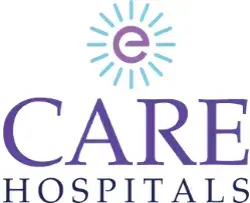-
Doctors
-
Specialities & Treatments
Centre of Excellence
Specialties
Treatments and Procedures
Hospitals & Directions HyderabadCARE Hospitals, Banjara Hills CARE Outpatient Centre, Banjara Hills CARE Hospitals, HITEC City CARE Hospitals, Nampally Gurunanak CARE Hospitals, Musheerabad CARE Hospitals Outpatient Centre, HITEC City CARE Hospitals, Malakpet
HyderabadCARE Hospitals, Banjara Hills CARE Outpatient Centre, Banjara Hills CARE Hospitals, HITEC City CARE Hospitals, Nampally Gurunanak CARE Hospitals, Musheerabad CARE Hospitals Outpatient Centre, HITEC City CARE Hospitals, Malakpet Raipur
Raipur
 Bhubaneswar
Bhubaneswar Visakhapatnam
Visakhapatnam
 Nagpur
Nagpur
 Indore
Indore
 Chh. Sambhajinagar
Chh. SambhajinagarClinics & Medical Centers
Book an AppointmentContact Us
Online Lab Reports
Book an Appointment
Consult Super-Specialist Doctors at CARE Hospitals

Robot-Assisted Fundoplication Surgery
- Advanced Technology
- Shorter Hospital Stay
- Pre & Post-Operative Care
- All Insurance Accepted

Chat With Our Experts
Get second opinion on Whatsapp
25 lakhs+
Happy Patients
Experienced and
skilled surgeons
17
Health Care Facilities
Top most Referral Centre
for Complex Surgeries
Robot-Assisted Fundoplication Surgery
Robot-assisted fundoplication is an innovative procedure that effectively treats gastroesophageal reflux disease (GERD), particularly in patients with large paraesophageal hiatal hernias. This complete guide explores the various aspects of robot-assisted fundoplication, including different surgical approaches, preparation requirements, recovery expectations, and potential benefits for patients considering this advanced surgical solution.
Why CARE Group Hospitals is Your Top Choice for Robot-assisted Fundoplication Surgery in Hyderabad
CARE Hospitals stands at the forefront of surgical innovation in Hyderabad with its advanced robot-assisted surgical capabilities.
- Advanced Technology: The hospital has elevated its speciality services by integrating cutting-edge robot-assisted surgery (RAS) technologies—specifically the Hugo and Da Vinci X robot-assisted systems. These sophisticated platforms have positioned CARE Hospitals at the pinnacle of surgical excellence, offering unmatched precision for procedures such as robot-assisted fundoplication.
- Remarkable Expertise: When seeking robot-assisted fundoplication surgery, the expertise of your surgical team is paramount. CARE Hospitals boasts extensively trained surgeons with remarkable experience in robot-assisted procedures. These experts specialise in gastrointestinal surgeries, making them exceptionally qualified to perform robot-assisted fundoplication with superior outcomes.
CARE Hospitals' commitment to excellence extends beyond technology to comprehensive care facilities:
- Exclusive operation theatre complex specifically redesigned for robot-assisted surgeries
- Round-the-clock imaging, laboratory, and blood bank services
- International infection control practises ensuring patient safety
Cutting-edge Surgical Innovations at CARE Hospitals
The technological arsenal at CARE Hospitals represents the pinnacle of surgical advancement, featuring state-of-the-art robot-assisted systems that transform gastrointestinal surgical procedures. The hospital has integrated the Hugo and Da Vinci X robot-assisted systems into its surgical practice, establishing itself as a leader in robot-assisted fundoplication surgery.
These cutting-edge robot-assisted platforms offer unprecedented advantages for patients undergoing robot-assisted fundoplication:
- High-definition 3D imaging systems provide surgeons with enhanced visualisation during complex procedures, allowing for meticulous precision when treating hiatal hernias and performing fundoplication
- Specialised robot-assisted arms offer extreme flexibility and manoeuvrability, enabling surgeons to access difficult anatomical areas with minimal tissue disruption.
- Advanced intraoperative monitoring systems ensure optimal safety throughout the robot-assisted fundoplication procedure.
- Innovative fundoplication techniques utilising cutting-edge suturing devices create secure and durable repairs.
- Specialised mesh materials reinforce repairs in complex cases, improving long-term outcomes
Conditions for Robot-assisted Fundoplication Surgery
Robot-assisted fundoplication is primarily recommended for patients who experience severe GERD symptoms alongside one of these conditions:
- Repeated aspiration pneumonia or reflux-related asthma
- Barrett oesophagus (though this indication remains somewhat controversial)
- Failed maximal medical therapy attempts
- Inability to take medications due to compliance issues or side effects
- Younger patients wishing to avoid long-term medication use due to potential adverse effects and ongoing costs
Types of Robot-assisted Fundoplication Surgery Procedures
Surgical techniques for robot-assisted fundoplication vary primarily based on the degree of stomach wrap created around the oesophagus. Three main procedures have established themselves as the standard options, each with specific applications and benefits:
- Nissen Fundoplication: This gold standard robot-assisted procedure features a complete 360° wrap of the stomach fundus around the oesophagus.
- Toupet Fundoplication: Creates a partial 270° posterior wrap
- Dor Fundoplication: This procedure constructs an anterior partial wrap of 180°. In this technique, the lateral edges of the stomach's great curve are sutured to the right and left crura.
Know Your Procedure
Understanding the complete journey of robot-assisted fundoplication requires knowledge of what happens before, during, and after this precise surgical procedure. Proper preparation and recovery knowledge helps patients approach their surgery with confidence.
Pre-surgery Preparation
- Your surgeon will order several essential diagnostic tests to examine your oesophagus and stomach function. These typically include:
- Esophagogastroduodenoscopy (EGD) - mandatory for assessment of esophagitis and the gastroesophageal junction
- Ambulatory pH monitoring - considered ideal for confirming GERD diagnosis
- Barium swallow - useful for evaluating anatomy, including hiatal hernia presence
- Oesophageal manometry - detects motility disorders that might influence the surgical approach
- On the day before surgery, you must avoid eating or drinking anything after midnight.
Robot-assisted Fundoplication Surgical Procedure
After anaesthesia induction, the surgeon mobilises the oesophagus and stomach by carefully dissecting surrounding tissues. The short gastric vessels are divided to allow proper fundus mobility. After creating a "window" behind the oesophagus, at least 3 cm of intra-abdominal oesophagus is established.
The surgeon approaches the crural fibres with heavy permanent sutures. Finally, the fundus is wrapped around the oesophagus using three to four seromuscular sutures placed 3 cm distal to the gastroesophageal junction, creating a secure wrap.
Post-surgery Recovery
Initial recovery involves a graduated diet progression, beginning with clear liquids on the first day.
- Most patients remain hospitalised for 1-3 days following robot-assisted hiatal hernia repair with Nissen fundoplication.
- Typically, patients return to work within 2-3 weeks after robot-assisted fundoplication.
- Complete recovery, including resolution of bloating and gas symptoms, usually occurs within 2-3 months.
Risks and Complications
Some of the common complications are:
- Infection
- Bleeding
- Oesophageal perforation
Apart from these, complications specific to the robot-assisted approach include:
- Pneumothorax
- Splenic injury during fundus mobilisation
- Flatulence
- Diarrhoea
Benefits Of Robot-Assisted Fundoplication Surgery
The tangible benefits for patients undergoing robot-assisted fundoplication include:
- Less post-operative pain
- Reduced trauma to body tissues
- Less scarring
- Shorter hospital stays
- Reduced blood loss
- Quicker recovery and return to normal activities
Insurance Assistance for Robot-assisted Fundoplication Surgery
Comprehensive health insurance plans typically cover various expenses related to robot-assisted fundoplication surgery, including:
- Hospitalisation costs
- Surgical procedure fees
- Surgeon's fees
- ICU charges
- Pre-hospitalisation expenses
- Post-hospitalisation recovery costs
- Ambulance services, in many cases
Second Opinion for Robot-assisted Fundoplication Surgery
Second opinions prove particularly valuable in these specific situations:
- Complex or unusual circumstances, such as large or recurrent hernias
- When considering major surgical interventions like robot-assisted Nissen fundoplication
- If you experience uncertainty about your initial diagnosis or treatment recommendation
- When you have multiple medical conditions that might increase surgical risks
Conclusion
Robot-assisted fundoplication stands as a remarkable advancement in treating GERD and hiatal hernias, offering patients better outcomes through enhanced surgical precision.
CARE Hospitals leads this surgical innovation in Hyderabad with state-of-the-art robot-assisted systems and experienced surgical teams. Their comprehensive approach combines cutting-edge technology with expert care, resulting in shorter hospital stays & faster recovery times for patients.
Frequently Asked Questions
Robot-assisted fundoplication is a minimally invasive surgery that treats gastroesophageal reflux disease (GERD) by wrapping the upper part of the stomach (fundus) around the lower part of the oesophagus.
Robot-assisted fundoplication is considered a major surgery, yet it is less invasive than traditional open approaches.
Robot-assisted fundoplication carries low risk when performed by experienced surgeons.
Operative time varies based on case complexity. For sliding hiatal hernias, the mean operative time is approximately 115 minutes (range 90-132 minutes). On the other hand, paraesophageal hiatal hernia repairs take longer, averaging about 200 minutes (range 180-210 minutes).
The primary risks include:
- Temporary dysphagia
- Gas-bloat syndrome- causing difficulty with belching
- Potential for wrap slippage or herniation
- Rare complications like pneumothorax or perforation
After robot-assisted fundoplication, patients normally follow a soft foods diet for 7-10 days. Complete recovery, including resolution of bloating symptoms, usually occurs within 2-3 months.
You may feel soreness in your belly for several weeks following the procedure. If you underwent minimally invasive robot-assisted surgery, you might also notice shoulder pain for a day or two afterwards – this is called referred pain and happens quite often.
Good candidates for robot-assisted fundoplication include patients with severe GERD symptoms plus one of these conditions:
- Repeated aspiration pneumonia or reflux-related asthma
- Barrett oesophagus (somewhat controversial)
- Failed maximum medical therapy
- Inability to take medications because of side effects
- Younger patients wanting to avoid long-term medication use
Following robot-assisted hiatal hernia repair, most people return to work or do normal physical activities within 2-3 weeks. Light exercise can typically resume within days after surgery.
Complete bed rest is rarely needed after robot-assisted fundoplication.
Absolute contraindications include inability to tolerate general anaesthesia and uncorrectable coagulopathy. Relative contraindications comprise severe obesity (BMI over 35), certain oesophageal motility disorders, and sometimes previous upper abdominal surgery.
After robot-assisted Toupet fundoplication or other fundoplication procedures, vomiting becomes more difficult.
Still Have a Question?

